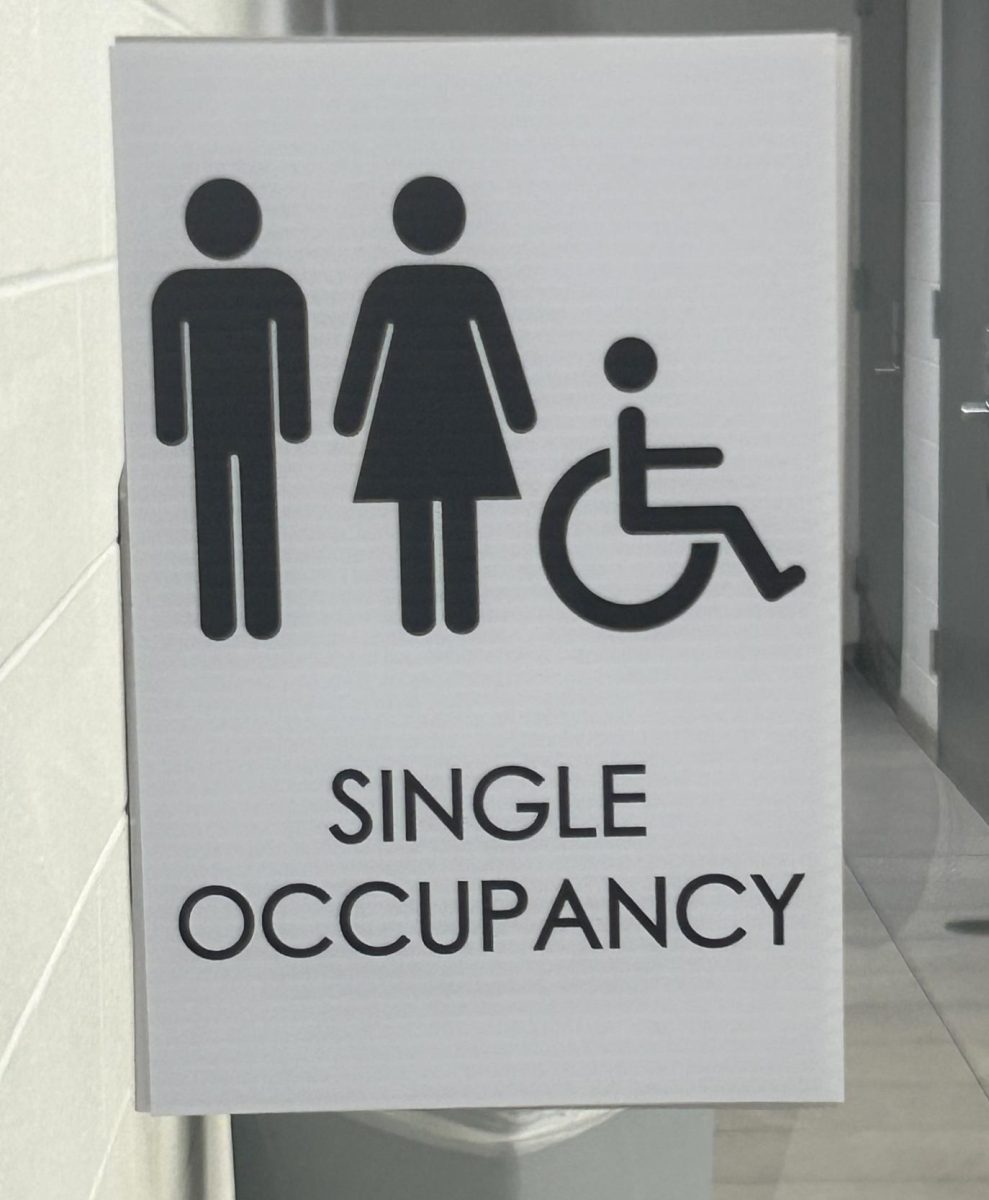Ohio, as it often does, plays a large role in the Nov. 5 presidential election. Each candidate pushes until the end for Ohio’s 17 Electoral College votes. As of Oct. 29, the Trump-Vance campaign leads Ohio by about seven points. Compared to past elections, this year’s presidential election has unique structure. Each candidate has served a term in the White House. To some extent, this election is a battle for who can pick up a second term in the White House.
FACES IN OHIO POLITICS
Becoming familiar with government officials from an individual’s community and state can improve political knowledge and help to make an educated decision.
Upper Arlington citizen and Ohio House Minority Leader Allison Russo (Democrat) spoke on a few of her many endorsements.
“I have endorsed Vice President Kamala Harris and Governor Tim Walz for president, vice president. For U.S. Senate, I have endorsed Senator Sherrod Brown for reelection. I have endorsed yes on Issue One,” Russo said.
U.S. Congressman from Ohio’s 12th district Troy Balderson (Republican) also spoke on some of his endorsements which differ from Russo’s.
“I have endorsed President Donald Trump, Bernie Moreno, Matt Coonsman, who’s in Newark for a judge race, and Paul Sherry for Guernsey County engineer,” Balderson said.
U.S. Sen. and vice presidential nominee for the Trump campaign, JD Vance, has contributed to Ohio’s image, whether it be positive or negative. Russo gave her opinion on Vance and how he represents Ohio.
“I don’t necessarily agree with some of his platforms or some of the things he has said, but you know, certainly, Ohio is in the news because he is on the national scene,” Russo said.
Balderson disagreed with the first part of Russo’s statement and claimed that Vance makes a good advocate with a positive future in mind for the Buckeye State.
“It could have major benefits for the state of Ohio as we move forward. And that’s part of the reason we’re advocating very hard for the Trump-Vance presidential [campaign]. I don’t think we realize how big an impact it will be to have an Ohioan as a vice president,” Balderson said.
Balderson and Russo think very highly of the candidates they publicly endorse. Russo explained a few ways she supports
them.
“It’s one thing to support candidates. It’s quite another thing to go out and be willing to go on the campaign trail and actually speak for candidates and be what we call a surrogate for candidates,” Russo said. “I do that for candidates that I really, really believe in.”
Russo supports many candidates from her party, but when she endorses them, it’s because she wholeheartedly believes in them and their support for the country. Voters who support candidates will often vote for their endorsements, which makes endorsements from popular and accomplished political figures important and impactful.
Russo gave reasons why she does not endorse the opposing campaign.
“[If the Trump campaign were to win the election] I would find that very concerning simply because of some of the things that the President has said about certain groups of people and marginalized groups that I find deeply concerning,” Russo said.
Russo looks forward to how the citizens and political leaders will unite to create the best future possible regardless of what
happens on Election Day.
“But at the end of the day, regardless [of] who is president, I believe that the votes of people and the voice of people, ultimately, we have to respect what their decision is and continue to move forward,” Russo said.
Russo spoke on her endorsement in the most popular section of this election: the presidential election.
“[If the Harris campaign were to win] the future of the country is going to be based on making sure that workers are supported, that they’ve got a strong environment for businesses to succeed,” Russo said.
Russo also believes having Harris as president would be a pivotal moment in American history.
“I am looking forward to her presidency, and certainly, it will be historic. She will be the first woman president that this country has had, and the historic significance of that cannot be overlooked,” Russo explained.
Balderson, on the other hand, does not see as bright a future if the Harris campaign enters office.
“[If the Harris campaign were to win] I wouldn’t see a lot of positive things moving forward,” Balderson said. “Her economic platform has not been good. The inflation has increased drastically. Obviously, the other big issue that’s even impacting Ohio is the immigration piece. The border has not been secured, so I do not see, and I’ve not seen a plan from her, how she will address these issues in her position as president.”
He is looking forward to the idea of the Trump campaign winning the election and entering the White House.
“Under the past Trump administration, when he won the election in 2016, our economy was great. Our inflation was down, our growth was great,” Balderson said.
Balderson, a U.S. congressman, also appreciates the state-level government in Ohio. He then used this opportunity to
return to the idea of an Ohio U.S. senator as a potential vice president.
“Ohio is already on the map, but it really becomes on the map. The current administration has done a great job from the state-level standpoint, the Governor and Lieutenant Governor, putting Ohio on the map. But it completely changes the whole dynamic with a sitting Vice President from Ohio,” Balderson said.

CONTRASTING CANDIDATES
In the past, Ohio has been considered a swing state: one of the states where either major party could win the electoral votes. In the 2024 election, there are seven battleground states whose electoral votes are decisive and crucial for each presidential candidate to win over. Ohio is not one of them. The last time Ohio voted blue was in 2012 when Barack Obama was elected, and in recent years, Ohio has been a reliably red state.
“[Ohio] doesn’t play the role that it did back in 2012, 2010, from a national standpoint, but from a local, it plays a very big role,” Balderson said. “I mean it.”
It’s easy to focus solely on the excitement and nerves the presidential election brings, but there’s more to be voted on at the booths. Russo brought up the importance of young voters recognizing these issues.
“The most important elections are actually the races for U.S. Senate because control of the U.S. Senate will depend on what happens in Ohio in the U.S. Senate race,” Russo said.
A notable issue of this election is Issue 1, which if passed would ban gerrymandering in Ohio. Gerrymandering is the process of manipulating electoral district boundaries to favor a particular political party or group. Ohio is one of the most heavily gerrymandered states in the country.
Sherrod Brown (Democrat), Don Kissick (Libertarian) and Bernie Moreno (Republican) are seeking offi ce as Ohio representatives in the U.S. Senate.
In addition, six justices are running for the Ohio Supreme Court: Republicans Megan Shanahan, Joseph Deters and Daniel Hawkins, and Democrats Michael Donnelly, Melody Stewart and Lisa Forbes.
Ohio is one of only eight states that elect Supreme Court judges through partisan elections, taking place every six years. The candidates running are affiliated with a political party, in direct contrast with the process for the Supreme Court of the United States, in which justices are nominated by the president and have no term limit. While SCOTUS appointments are officially
nonpartisan, the justices are typically still grouped into “liberal” or “conservative.” Democratic presidents have a tendency to nominate justices with liberal opinions, and Republicans typically nominate conservatives. Unlike Ohio, voters do not have a say in who gets a seat on the Supreme Court.
Ohio stands in a particularly unique place because it is the only state with the potential to turn the court from a 4-3 Republican majority to a 4-3 Democrat majority.
In Ohio neighborhoods, political signs are stuck into lawns to show public support and advertisement. This fall, some of these signs include Donnelly, Stewart and Forbes: Democratic candidates for Ohio’s Supreme Court, and “YES” or “NO” on Issue 1.
JD Vance, Trump’s selection for vice president, is a senator from Ohio. His rural Ohio background has been a key part of his profile, as seen in his book “Hillbilly Elegy: A Memoir,” published in 2016, about his Appalachian family and his experience in his hometown of Middletown, Ohio.
In fact, three out of the four major candidates in this presidential election have made their humble backgrounds an important part of their platforms. Kamala Harris often describes her upbringing in a middle-class family, raised by her hardworking mother and having a job at McDonald’s.
Harris’ running mate, Tim Walz, was a high school teacher and football coach. “Coach Walz” has become a part of his advertising campaigns, even using football analogies when talking about the election. In a recent ad, Walz draws out a game plan on a whiteboard as an analogy to the election.
“Our linebackers are watching that guard and they will read. So this linebacker is you. Getting to the polls, voting. You got our chance to stop this. Let’s play defense, folks,” he enthusiastically claimed.
Walz became the governor of Minnesota in 2019 and often uses this position to give his platform credibility with middle-class rural, working areas. He also sometimes invokes the fact that he grew up working on a family farm.
Despite Vance’s rural roots, he attended Yale and had an entirely political career, which is different from Walz, who originated from the rural working class but took a variety of other routes before going fully into politics.
In Vance’s memoir, he makes a conscious effort to maintain relatability with the less privileged despite his rise in power.
“Pajamas? Poor people don’t wear pajamas. We fall asleep in our underwear or blue jeans. To this day, I find the very notion of pajamas an unnecessary elite indulgence, like caviar or electric ice cube makers,” Vance said.
All of these candidates have assured that if they were to take office, middle-class voices would not go unheard. By using their backgrounds, they’re able to directly speak to voters.
One candidate stands as a stark outlier to this pattern. Donald Trump grew up in Queens, New York, and his background is characterized by lifelong affluence. A former businessman, Trump had a leading role in “The Apprentice,” his reality show that first aired on Jan. 8, 2004.
He posed recently as a McDonald’s worker. Adorned in an apron over a white suit and red tie, he handed out food from a drive-through window while being photographed. This is similar to popular videos of Harris and Walz visiting small, locally owned businesses around the U.S. and interacting with the working class to spread their campaign and present themselves as friendly and down-to-earth.
On the legal side, there is an unusual difference between the two presidential candidates. Many people point out how this election can appear as a battle between the prosecutor versus the convicted felon.
Donald Trump has been convicted of 34 counts of falsifying business records, and the sentencing trial will take place after the election on Nov. 26. Additionally, he has been indicted for attempted interference of the 2020 election results, but that case is currently on hold.
Kamala Harris, on the other hand, was a prosecutor. She graduated from law school to serve as the District Attorney of San Francisco and eventually was California’s Attorney General from 2011 to 2017.
Both candidates have used their relationships with the judicial system as key points in their campaigns. In 2023, a mugshot was taken of Trump at the Fulton County Jail in Atlanta, GA. He and his supporters have since used this photo to his advantage, printing it on T-shirts and mugs and selling them on his website. The words “Never Surrender” and “Not Guilty” decorate the merchandise. This approach resonates with his supporters — it gives them a sense of purpose and loyalty, reinforcing the idea that they are part of a larger movement standing against perceived injustices. The slogans echo a popular catchphrase from Trump’s initial run in 2016: “You’re Fired!” This also intended to paint Trump as a strong, defiant leader.
Trump has used his conviction to rally his supporters behind the message of a skewed justice system and to accuse the Biden administration of weaponizing the federal courts against him.
After the conclusion of his hush money trial on May 30, Trump said, “I’m fighting for our country, I’m fighting for our Constitution. Our whole country is being rigged right now. This was done by the Biden administration in order to vote to wound or hurt an opponent, a political opponent. And I think it’s just a disgrace.”
Harris often declares that she is the antidote to harmful criminal activity, including Trump’s.
In a speech at campaign headquarters after President Biden endorsed her, she said, “I took on perpetrators of all kinds… So, hear me when I say: I know Donald Trump’s type.”
Another strong point of contrast during this race has been not just between the candidates’ profiles but the way they have interacted with each other.
The presidential debate between Harris and Trump, which took place on Sept. 10, has been described as contentious, zinger-filled and embarrassing, with highlights such as one argument made by Trump: “she copied Biden’s plan, and it’s like four sentences, like run, Spot, run.”
Many of Harris’ points were also intended to denounce her opponent.
“World leaders are laughing at Donald Trump,” she said.
The debate was essentially the first time American citizens got to witness the two candidates directly against each other on a level playing field. While this earlier debate between the two most prominent faces in America’s politics was palpably hostile, the debate between the two potential vice presidents was much more courteous.
During their Oct. 1 debate, Walz and Vance displayed a more conscious effort to show respect to their opposition. One notable instance was when Walz said his son was present during a shooting at a community center, and Vance responded with sympathy.
“Tim, first of all, I didn’t know that your 17-year-old witnessed the shooting. And I’m sorry about that,” Vance said. “Christ, have mercy. It is awful.”
Both VP candidates sometimes made efforts to close the gap between their contrasting platforms, both taking considerably more moderate stances than their running mates.
“I don’t think Senator Vance and I are that far apart. I’m not opposed to what he’s talking about on options,” Walz said at one point.
Despite the somewhat similar moral principles between the vice presidents, the ballot represents significant ideological divides that will shape the political landscape of the state and the nation.
ZOOMING INTO UA
The culture of Upper Arlington, especially among its students and young voters, has been reflecting the significance of the 2024 election.
One of this year’s UAHS home football games, taking place on Oct. 18, featured the USA theme. The theme, encouraging patriotic attire – red, white, blue, the American flag pattern – is typically the Friday night dress code at least once each football season. This year, though, it carried a bit of extra weight as the year of the 2024 presidential election. The game was also just 18 days away from Nov. 5, Election Day.
A black “Trump-Vance 2024” flag, brought by sophomore Jack Elliot, waved in the air among red, white and blue balloons.
“I brought the Trump flag to the football game because I believe Trump would be a much better president than Kamala Harris,” Elliot said. “I thought it would be patriotic to bring.”
He commented on his support for candidate Donald Trump and how it motivated him to express his opinion.
“I saw the theme and I was like, ‘this would be a great chance to just put myself out there,’” Elliot said. “I believe what [Trump] believes in, and what he’s promoting as president and what he wants to do.”
Elliot also stated that the principle of freedom of speech has allowed him to feel comfortable vocalizing his views.
“It’s just a right that all citizens have,” he said.
Elliot also owns Trump hats, and his house is one of many in Upper Arlington that have yard signs to display household support of one of the candidates.
Throughout neighborhoods, suburban and rural alike, it is nearly impossible not to catch sight of political signs stuck into yards or waving as flags. These small movements of political advertisement vary in size, from the average yard sign to more conspicuous displays of support, such as an elaborate combination of flags and signs.
UAHS senior Gabby Vonder-Embse gave insight into how she observes Upper Arlington residents utilizing campaign signs.
“I definitely see a good mix of Harris and Trump signs,” she said. “I definitely notice that [when] people [put] up Harris signs, there’s always a Trump sign right next to it, or vice versa.”
There may be a level of competition when it comes to adorning one’s home with political messages. It can sometimes seem that the goal is to make the loudest endorsement possible. Campaign signs may not be the most effective way to garner support for a certain candidate but the purpose behind them is more about the expression of opinion.
“I don’t really think that yard signs are ridiculously influential,” Vonder-Embse said. “I really just think they’re more for broadcasting their own political viewpoint.”
Campaign signs are symbols of public engagement and democracy, and can also generally encourage people to get to the polls on Election Day.
“They might be a good reminder for people to vote, but at the end of the day I wouldn’t necessarily say I’m influenced to vote a certain way because of them,” Vonder-Embse said.
Aside from Trump-Vance or Harris- Walz, other campaign signs in UA’s residential neighborhoods include slogans such as “Any Functioning Adult 2024,” “Vote Like Democracy Depends On It” or simply “KAMALA!”
The city of Upper Arlington does have regulations that apply to political signage.
While there are no restrictions on the language used, there is a limit of five signs or banners on each property, and they should not be more than 8 feet on each side. For freestanding signs specifically, they should be no taller than 4 feet. The City of Upper Arlington website also states that signs cannot be illuminated or have changeable text.
Youth at the Booth is an opportunity for Ohio teens, at least 17 years old, to hold roles as poll workers on Election Day. Not only does it provide a choice between service hours (if a student donates the money earned to charity, it counts towards service hours) or payment, but it also gives participants close-up insight into the process of collecting ballots and casting votes.
Seniors Alberto Manganelli and Anna Peters both took part in Youth at the Booth last year.
“It’s a good experience to learn about how the election process works,” Peters said, who signed up to work on this year’s Election Day as well.
The day requires a commitment to working from 5:30 a.m. until at least 8:30 p.m., totaling a minimum of 15 hours.
“I wouldn’t do it again just because it’s such a long [time],” Manganelli said. “But I recommend doing it just to understand how politics [work] and the beauty of voting.”
For Manganelli, one memorable part of the experience was the diversity of people he interacted with.
“One of the positive things [was] just meeting the other people that worked at the booth,” he said. “There was [someone with] a doctorate in Physics, so I talked to him a lot. There’s people all around.”
Peters also commented on some of her key takeaways.
“I respect the workers so much more,” she said. “When I went to vote…I kind of was impatient, [but] I respect that it’s a lot of work to just stand there for like, 17 hours.”
Despite the lengthy commitment and hard work, Peters and Manganelli see Youth at the Booth as an enriching experience.
From contributing hours of their time to simply observing the political climate through social media and breaking news headlines, students are bound to form some level of opinion about political issues.
“I think people definitely pay attention to what is going on in politics, but they don’t necessarily actively seek out political information, which has its downsides,” Vonder-Embse said.
One factor that can contribute to students’ interest in politics is whether or not they would be able to vote this year.
“I follow politics to the extent of: I want to know exactly who I’m voting for, and [I] don’t vote randomly…but I’m not super into it,” Peters said. “I feel like the more people, Gen Z especially, [are] able to vote, [more] of us are following politics.”
Russo commented on the importance of voting.
“This is a responsibility that people have died for, that people have gone to war to be able to have a democracy like the United States,” she said. “It’s so sacred and so important.”
Regardless of whether a voter has strong opinions or feels indifferent to politics, going to the polls is imperative, as it maintains the balance of power in a democracy.
“You make a difference, and it’s encouraging for me to see more and more young adults learning about the issues,” Balderson said. “I think it’s important that they learn about the issues that impact them.”
Some important topics mentioned among students interviewed were education, Israel and Palestine, immigration, compromise and especially abortion – also, the chance for the first female president.
“I think one of the most important things I wish that both sides have [is] compromise,” Manganelli said. “I think the beauty of how the government works is we need to have compromise and just be able to collaborate. And from there, I think the future can prosper.”








